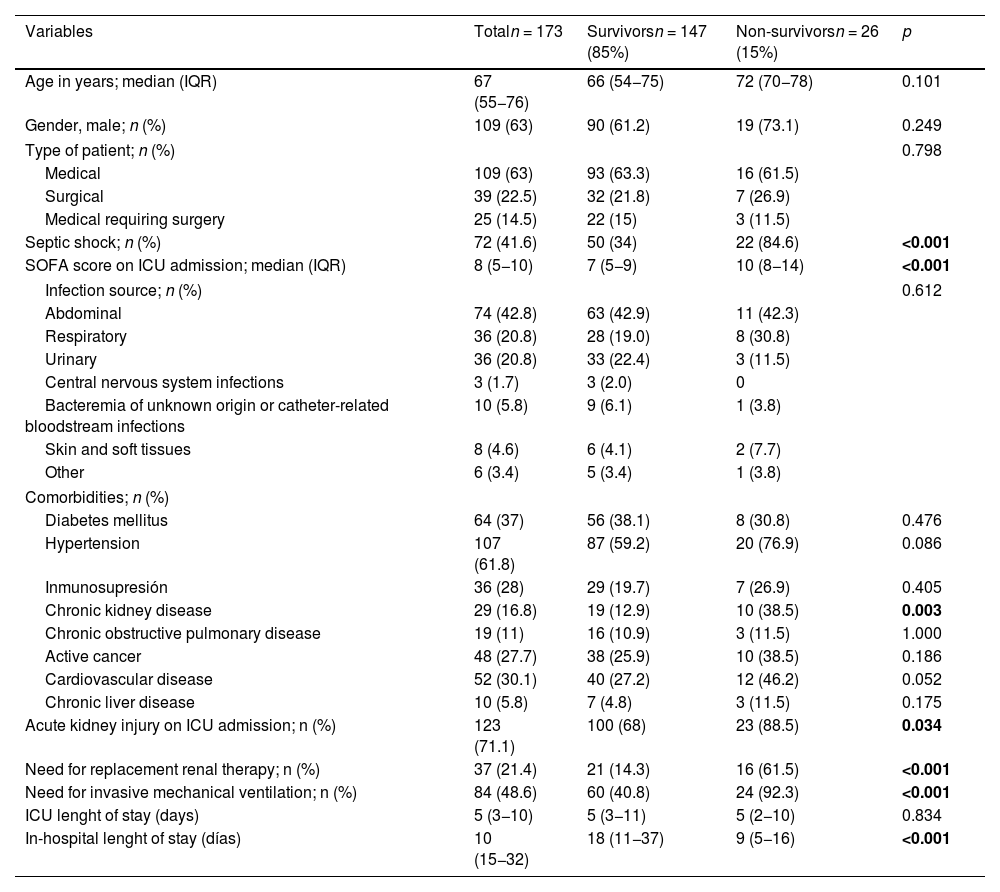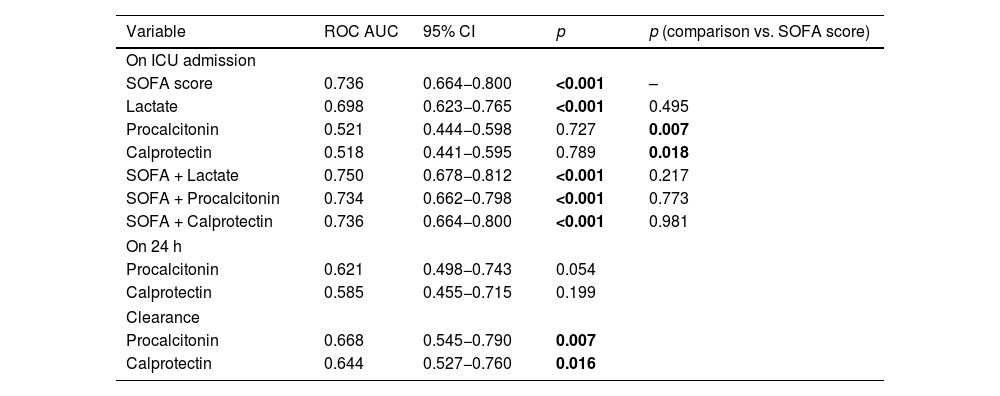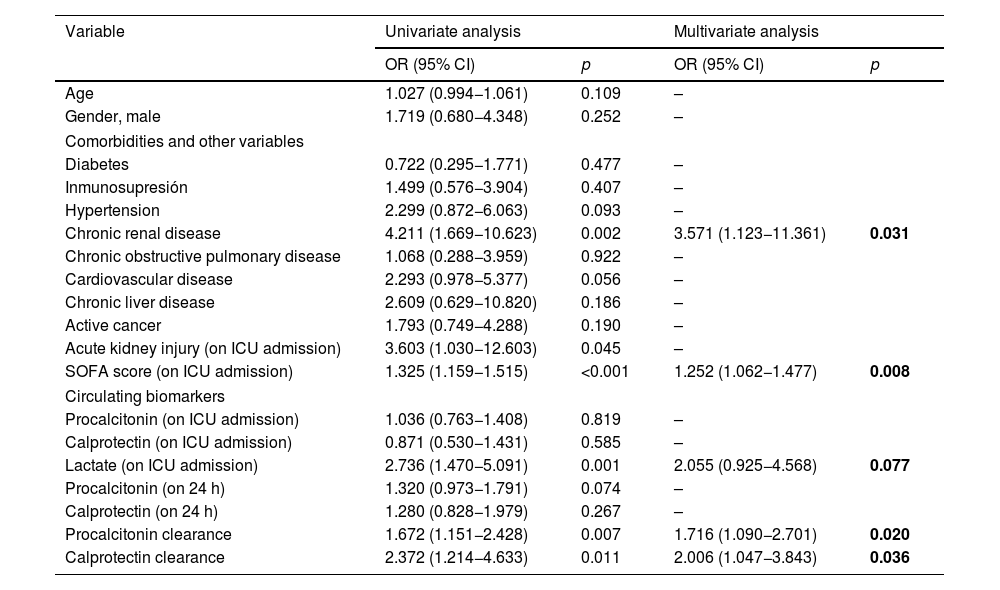1) To evaluate the ability of baseline and on 24 h serum calprotectin, in comparison to canonical biomarkers (lactate and procalcitonin), for prognosis of 28-day mortality in critically ill septic patients; and 2) To develop a predictive model combining the three biomarkers.
DesignA single-center, retrospective study.
SettingIntensive Care Unit of a university hospital.
Patients or participantsOne hundred and seventy three septic pacientes were included.
InterventionsMeasurement of baseline lactate, procalcitonin and calprotectin level and procalcitonin and calprotectin levels on 24 h.
Main variables of interestDemographics and comorbidities, SOFA score on ICU admission, baseline lactate, procalcitonin and calprotectin on admission and on 24 h and 28-day mortality.
Results1) On ICU admission, lactate was the only biomarker achieving a significant accuracy (AUC: 0.698); 2) On 24 h, no differences were found on procalcitonin and calprotectin levels. Procalcitonin and calprotectin clearances were significantly lower in non-survivors and both achieved a moderate performance (AUCs: 0.668 and 0.664, respectively); 3) A biomarker based-model achieved a significant accuracy (AUC: 0.766), trending to increase (AUC: 0.829) to SOFA score alone; y 4) Baseline lactate levels and procalcitonin and calprotectin clearance were independent predictors for the outcome.
Conclusions1) Baseline and on 24 h calprotectina and procalcitonin levels lacked ability in predicting 28-day mortality; 2) Accuracy of clearance of both biomarkers was moderate; and 3) Combination of SOFA score and the predictive biomarker based-model showed a high prognostic accuracy.
1) Valorar en pacientes críticos sépticos la capacidad de la medida basal y a las 24 horas de calprotectina sérica, en comparación con marcadores convencionales (lactato y procalcitonina), para predecir mortalidad a los 28 días; y 2) Generar un modelo predictivo basado en la combinación de biomarcadores.
DiseñoEstudio unicéntrico, retrospectivo.
ÁmbitoUnidad de Cuidados Intensivos de un hospital universitario.
Pacientes o participantes173 pacientes sépticos.
IntervencionesMedida de las concentraciones basales de lactato, procalcitonina y calprotectina y de procalcitonina y calprotectina a las 24 horas.
Variables de interés principalesDatos demográficos y comorbilidades, escala SOFA al ingreso, lactato al ingreso, y procalcitonina y calprotectina basal y a las 24 horas y mortalidad a los 28 días.
Resultados1) Al ingreso, el lactato fue el único biomarcador con un rendimiento predictivo significativo (AUC: 0,698); 2) A las 24 horas no se observaron diferencias en las concentraciones de procalcitonina y calprotectina sérica, pero sí en el aclaramiento de ambos biomarcadores, que mostraron un rendimiento moderado (AUCs: 0,668 y 0,664); 3) Un modelo combinando biomarcadores bioquímicos alcanzó un rendimiento significativo (AUC: 0,766), con tendencia a incrementar (AUC: 0,829) el de la escala SOFA aislada; y 4) Las concentraciones de lactato basal y el aclaramiento de procalcitonina y calprotectina fueron predictores independientes del evento.
Conclusiones1) Calprotectina y procalcitonina basal y a las 24 horas carecen de valor para predecir mortalidad a los 28 días; 2) El rendimiento del aclaramiento de ambos fue moderado; y 3) La combinación de la escala SOFA y un modelo combinando los biomarcadores sanguíneos mostró un rendimiento pronóstico alto.
Article
Go to the members area of the website of the SEMICYUC (www.semicyuc.org )and click the link to the magazine.










